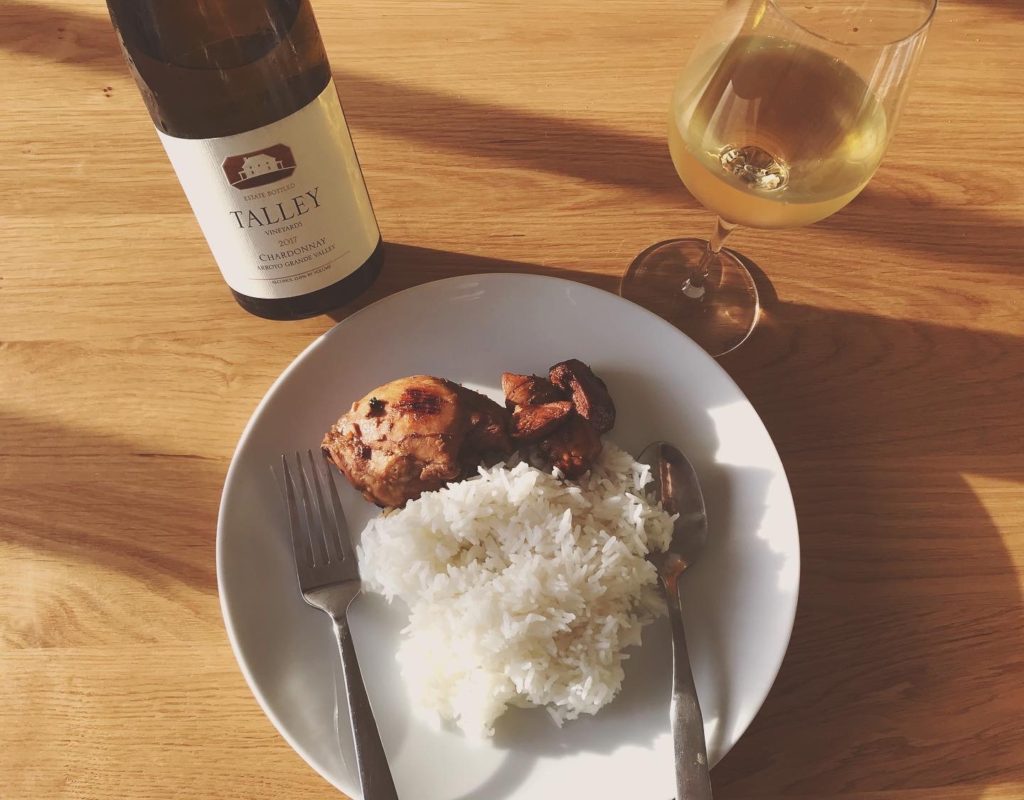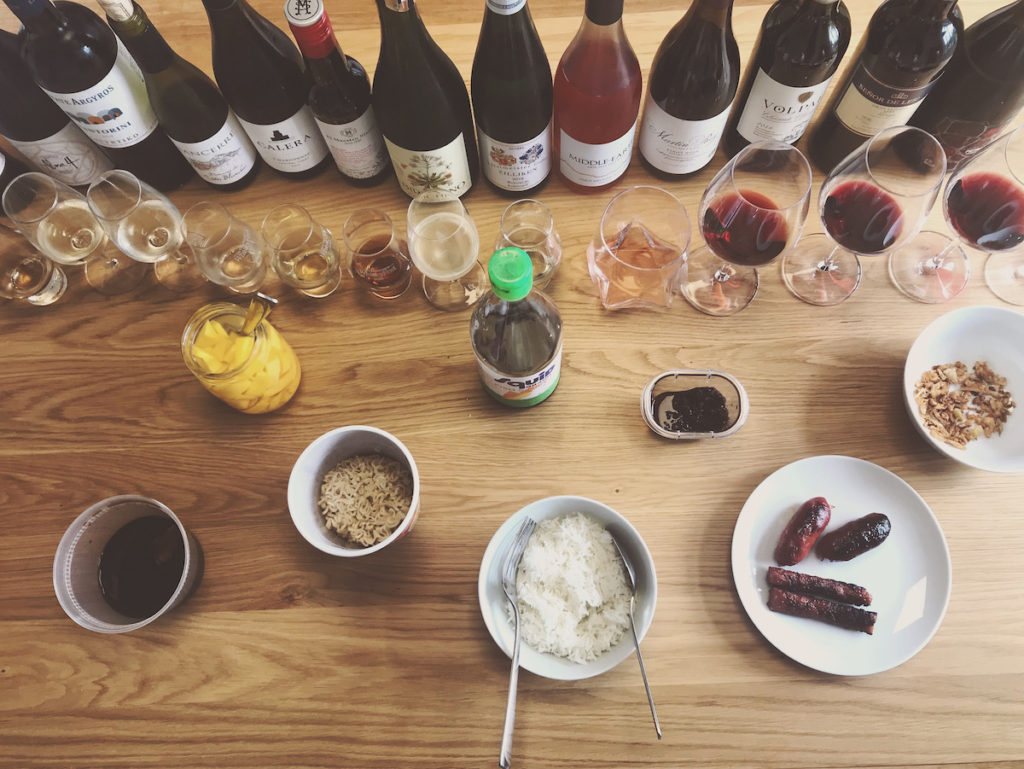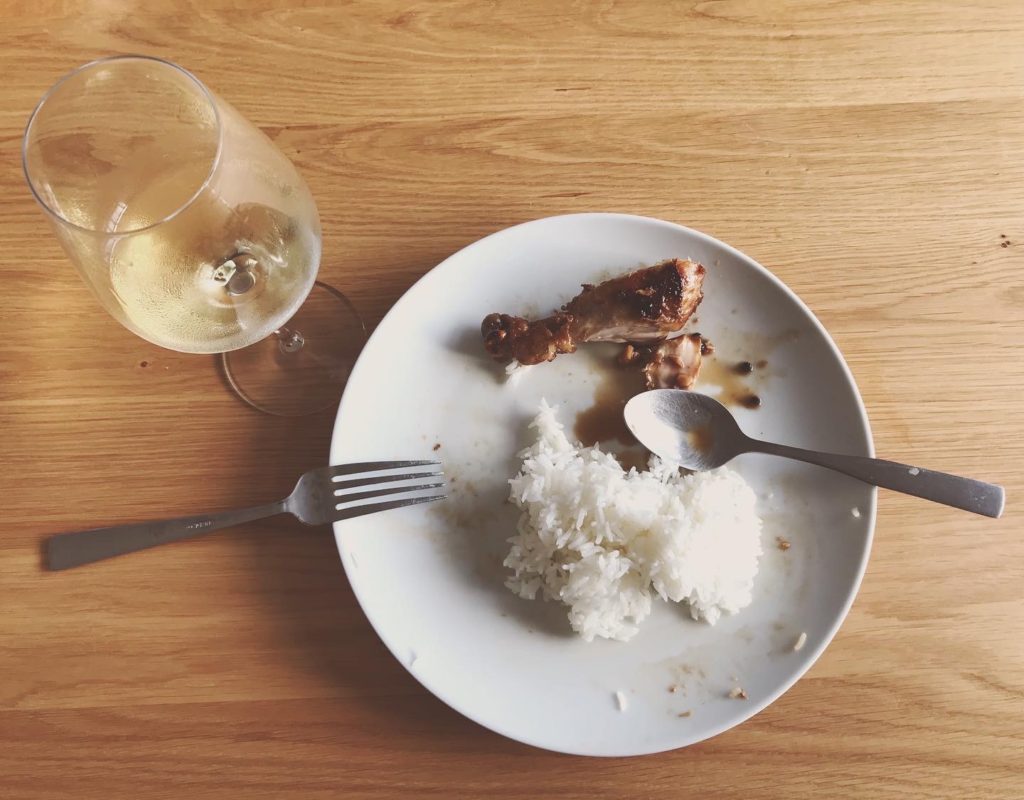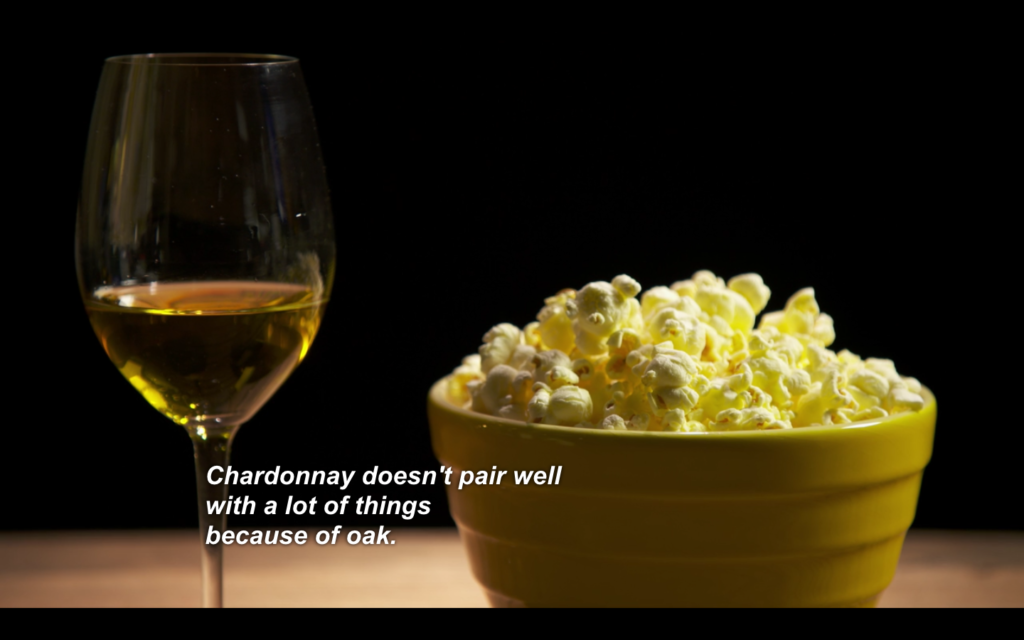This is a weird confession as I approach 10 years in the wine industry, but I’ve never felt completely at home in the world of food and drink.
In the 2nd grade, we used to have morning magnet polls as we gathered on the carpet in front of the chalkboard. How did you travel to school: car, van, bus, or on foot? What’s your favourite season: spring, summer, autumn, or winter? And then, this question – what did you have for breakfast: fruit, toast, cereal, or yoghurt? I hesitated and looked around the room. I was confused, but no one else seemed to be, unless they were hiding it well. I shrunk back, unlike my vampire-repelling breath that morning: I had garlic fried rice and part of an omelette for breakfast, including the extra garlic pieces my brother very carefully picked out of his serving. I sheepishly picked “toast”. It was years later when I learned that garlic fried rice (sinangag) was part of a normal breakfast for Filipinos.
Saying that food is art is so obvious at this point that it almost feels silly to use that as a starting point here. But it was always something I wrestled with while growing up. In my family, food was always about survival. One of the biggest lessons my mom ingrained into my psyche was that food was not something to be wasted. If you didn’t like what was served for dinner, you didn’t eat. I barely remember this Filipino recipe during one night in my childhood involving some kind of fish (salmon?) that was cooked or stewed in some kind of coconut milk base. I tried it, but I couldn’t do it. I was punished, I cried at the table, and I went to bed hungry that night. I know that we all come from different walks of life, but after moving to San Francisco from Vancouver, I was genuinely surprised there were many more picky eaters than I had expected. Being outright picky was not an option for my brother and I, nor was fighting over food. (That being said, I’ve grown to hate soup, so you can castigate me for that later.)

Sometimes shame bleeds through survival and culture when you’re a child of Filipino immigrants. My cousins and I, with strength in numbers, would beg our parents to please please please just order pizza instead of this smorgasbord of Filipino food during our parties – and during the few times my mom saw a classmate walking to school and decided to give them a ride, I would immediately turn off my mom’s Filipino music to stifle any questions that might come up about it. You refuse to teach us Tagalog, I thought at the time, so why should we listen to your music?
I would tune into the feel-good vibes of Rachel Ray after school or doze off watching Martha Stewart when midnight approached, but I never really understood what I perceived was the “fancification” of food: it all seemed out of reach to me for several reasons. I remember this one particular evening, working at my first restaurant gig as a dishwasher. I mentioned a particular restaurant in passing – this Italian-Greek place in the neighbourhood that me and my family went to whenever we had something to celebrate. Nothing fancy, in the vein of a neat garnished plate of Caprese salad, but with a pitcher of cheap beer for the table. We loved that place. My boss, overhearing, basically called it a shithole whose owners had no idea what they were doing. Not only was there shame in Filipino food, but now I had to feel shame about where we ate out, too? Fuck this. I’ll eat what I want.
All of this, to say this: I’ve had a complicated relationship with food and identity. I remember that Filipino kid who was punished for eating with a fork and a spoon at a Montréal elementary school in 2006. I look in the mirror and wonder why it took me so long to love this nose. I look at the queer Filipino friends I’ve made over the years and I wonder why it took so long for me to feel like a valid human being. Now I crave that smorgasbord of Filipino food but through a lens of reinterpretation, and I can’t help but think the journey of a Filipino is a supremely unique one.

A wave of newness – a cultural reset of some sort – washed over me as a new friend texted a photo of the first adobo they made at their new place. My heart warmed up.
Let’s teleport back to today! As previously mentioned, I really wanted to choose a snapshot of Filipino flavours and see how they interacted with a broad spectrum of wines as a riposte to the folks doing Asian food a disservice when it comes to lazy food and beverage commentary. Adobo, which is basically the national dish of the Philippines, is essentially chicken or pork stewed with cane vinegar, soy sauce, garlic, black peppercorns, and bay leaves. Acidity is one of the cornerstones that ties Filipino dishes together, so exploring this specific combination of flavours was a solid core from which we could extend with our wine pairings. That’s the hunch, anyway.
One of the things I love about adobo is that it’s incredibly malleable despite the intense undercurrent of sourness – some people like a drier version, some people like a saucier version, some people like to make vegetable versions, and in a book that I refer to often, they suggest adding fruit preserves to the marinade in order to soften the perpetual ring of the vinegar. I don’t know – I’m gay. We love deriving meaning from seemingly insignificant things. Can I read your pot of adobo?
Though the name is Spanish, Filipinos have been making this dish long before Spanish influence, and even without soy sauce, which was later added due to culinary influence by the Chinese.
There’s something a little humorous and slightly dissonant about drizzling this simple sauce over rice and pairing this basic combination with thirteen different wines, but I’m determined that something in this lineup will work, despite the calls for how vinegary flavours mute wines faster than… I don’t know, faster than this industry mutes people who aren’t straight white men. Anything that blankets the dish can matter more than what you’re putting it on top of: a Bordeaux very well may work for a simple steak seasoned with salt and pepper, but a sweet steak sauce might demand an adjacent wine more generous with its fruit, like a Chilean Carmenère or an Australian Shiraz.
I wrote a post about adobo and wine pairings in 2012, which coincidentally happens to be the post with the most hits on my blog. I previously thought that different notes in adobo could match up with certain wines: Sangiovese to match the savouriness; Rioja to mirror the oxidative aroma similar to soy sauce; and a fuller Chardonnay for God knows what – a hunch, I guess. I’m retesting these wines to see if my theory was correct, but I’m also adding a few more wines to the matrix: a biologically-aged sherry to match the saltiness; an oxidatively-aged sherry to lean into the savouriness of the dish; a sparkling white as an all-purpose catch-all; a soft red with enough fruit to go against the sourness, and an off-dry German Riesling because that’s what they all say we should pair with Asian food. Wildcards for this round included a high-acid and mineral-driven white (Greek Assyrtiko); a zippy and expressive citrus-driven white (Sancerre); an unfiltered and funky pet nat; an off-dry middle-of-the-road rosé; and a barely off-dry Lambrusco. (Click here to teleport back to that moment for a list of the wines and their tasting notes!)

Now, the moment of truth: structurally, the Riesling worked, but the piercing arrow of citrus and stone fruit didn’t necessarily make sense for a savoury, stewed dish. As much as I would totally do this, wearing a bright and sparkly sequined dress to a cripplingly heterosexual billiards hall didn’t taste good, here (no offense to adobo). Surprisingly, the oaked Chardonnay – a wine that purportedly dOeS nOt Go WiTh aSiAn fOoD – worked the best. I knew I was onto something. The only wines that fell flat were the reds, and everything else was middling: there’s definitely potential to mould these latter pairings into tasty ones assuming you change the dish enough to lean into the pairing a little more. Toss on a hat, change up your eyeshadow, throw on some flip-flops, perhaps a cute belt, and you’re golden.
I was honestly a little bit surprised, but the deep bass notes of the Chardonnay gave room for the shrill acidity of the adobo to shine and harmonize, in the vein of a Con Te Partirò-esque duet. A lot of traditional rules say we have to match the acidity of the food with acidity in wine, but this got my gears turning for a alternate set of rules! I had to test this again, and with an actual and complete dish this time. I decided to choose something a little more polished and defined – I stayed in the Central Coast but went with a wine from Arroyo Grande Valley, which I knew would have a little more tension and pop while keeping its weight.
Talley 2017 “Estate” Chardonnay (Arroyo Grande Valley, Central Coast, California) Aug 2020. $20 USD.
Opens up with yellow plum, well-integrated oak spice, butter, red apple, and ripe lemon. Dry, weighty, and intense on the palate; round rather than piercing but with beautiful intensity of fruit to carry it through to the end. Beautifully polished, with a hint of dried apricot that glows with promise and eventually fades into an oaky savouriness. An undertone of almond-vanilla yoghurt throughout. Sur lie in French barrels for 14 months; 20% new oak.
As predicted, the pairing worked well. The Chardonnay intertwined with the adobo and gave a buttery-savoury conversation with the subtly piercing notes of the adobo. They really reached an apex at the end of the bite, where both savoury tones – from different instruments – came together to make a chord. I think this is a great style to stick to: a cooler New World version with judicious yet present oak, with enough tension to blend with the dish but not enough to sing over it, with bass notes to lift everything from underneath. If not California’s south Central Coast, look for cooler pockets of Sonoma, cooler pockets of Australia, and New Zealand. To name a few.

Would wines with similar structure but different flavour profiles work, like some Viogniers? Maybe. The floral wine in the lineup didn’t necessarily jive well in my opinion, but that’s all up to taste.
Would unoaked versions work? Sure. The key here, I think, is the weight, intensity, and roundness. Keep those, and you’re golden, girl.
Y’all doubted oaky Chardonnay. Bring on the next pairing – I’m in some type of mood, so I think I’m doing lumpia and pancit next. Leave your shoes at the door.
